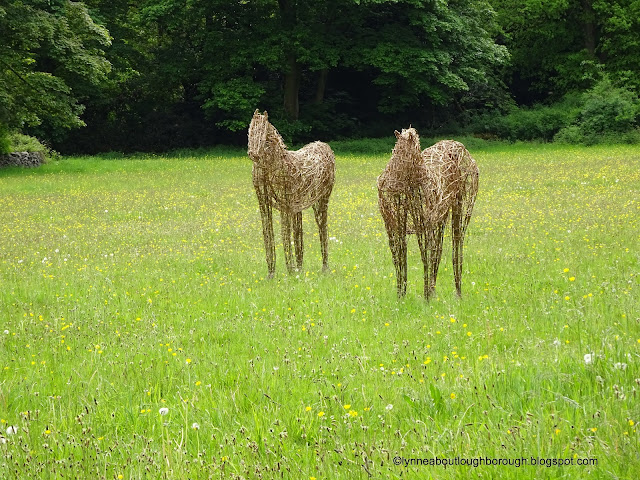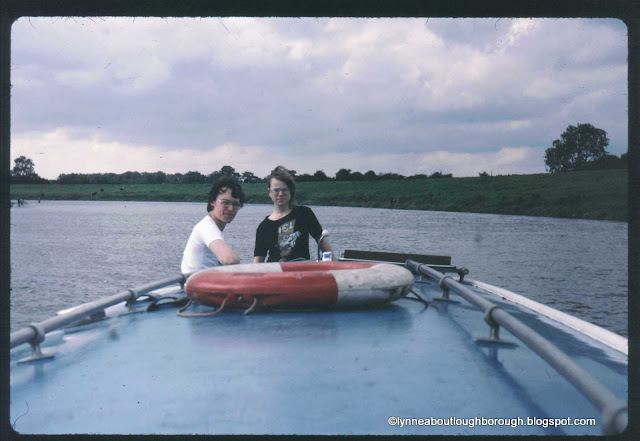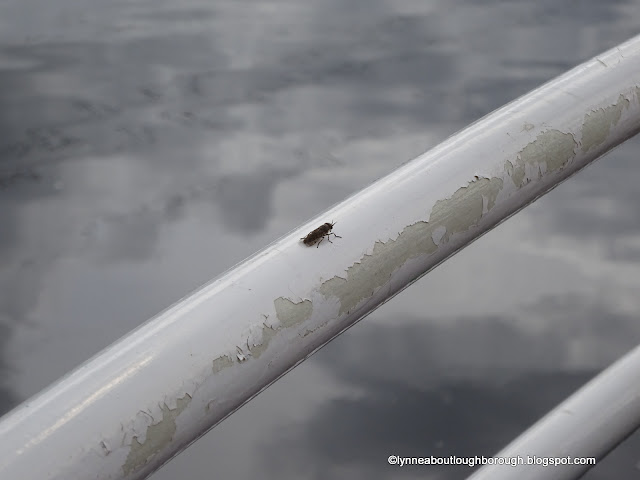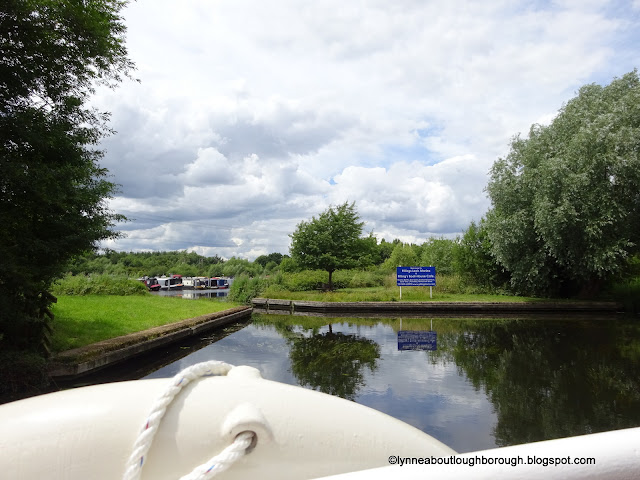Edwin Goadby’s father, Joseph, was born into a family of Baptists, on 1 August 1801. Joseph's father was Joseph Goadby and his mother, Frances Mee, and his birth was registered in Market Bosworth. By around 1814, Joseph was an apprentice clockmaker with Samuel Deacon’s workshop in Barton-in-the-Beans. On 27 December 1826, the young Joseph married Elizabeth Jackson in Nailstone, Leicestershire. It is supposed that Joseph had met Elizabeth, the daughter of one Thomas Jackson, a Baptist minister, whilst he was an apprentice with the Deacons.
The Dover Street
Baptist Chapel (now the Little Theatre) opened in Leicester in 1824, and in
1827 the younger Joseph Goadby preached an anniversary sermon there. Joseph and
Elizabeth’s children were baptised at the chapel; Joseph Jackson Goadby in 1828;
Thomas in 1829; Catherine Elizabeth in 1831; John Orissa in 1833; Anne in 1835;
Edwin in 1836; Fanny (Frances) in 1840; James Whetstone in 1843, and Frederick
William in 1845.
In November 1839, Frances Mee, Joseph’s mother died, and in 1841, Joseph’s father, Joseph, died. On 6 February 1848, Joseph Goadby left the Dover Street Chapel and became the minister at the old Wood Gate chapel in Loughborough, when the Baptists split (some remained at the Baxter Gate chapel, but around 139 members moved to Wood Gate). He preached his inaugural sermon on the first Sunday in February 1848, and in 1849 another child, Ellen, was born to the family. In 1851, Joseph and Elizabeth were living on Leicester Road with some of their children: Catherine (19) and Ann (15) (both school mistresses), Frances (10) a scholar and Ellen aged 2, and brothers James (7) and Frederick (5), scholars.
1857, and 1859 were sad years for the family, as first Frances, aged 17 died in Loughborough, followed six months later by the death of Ellen, aged 8, and in February 1857 by the death of Joseph their father. Joseph Goadby had persuaded his son, Edwin, that a career in medicine would be an appropriate path in life, and although Edwin studied hard for this, he was, at the same time, writing poems and articles. On the 1861 census return, Edwin was listed as a drug dispenser, living with sister Catherine, now aged 29, brothers James, aged 17, a cotton hosier clerk, and Frederick William, aged 15, a scholar, and servant Eliza Thorpe, at Leicester Road. No property number is listed, and the boys are wrongly transcribed on the census returns as sons of Catherine, when they are in fact her brothers.
In the same year, Edwin Goadby is listed in Drake’s Commercial Directory of 1861 as a dispenser at the Dispensary on Baxter Gate, Loughborough. The Dispensary had moved from Mill Street (now Market Street) to Baxter Gate in 1824, and was situated approximately where the former Odeon Cinema (latterly Beacon Bingo) is. This is where Edwin would have worked, because the Baxter Gate hospital did not open until 1863, and was situated where the new Cineworld Cinema is. Until around 1860, the Dispenser would have been known as an apothecary, and one such apothecary in 1855 was Thomas Jarrett, who was paid £40 per year, so Edwin would have been paid well.
In 1863, Edwin Goadby is listed in White’s Directory as being a dispenser at the Dispensary on Baxter Gate, Loughborough. As 1863 was the year that the old Dispensary closed and the new building opened, perhaps it was this change that prompted Edwin to move into journalism full-time? He certainly had had several articles successfully published, and by 1864 he was most certainly working on the ‘Loughborough Monitor’ newspaper, and in March 1864, the newspaper carried an announcement of the publication within its pages of a ‘History of Loughborough’, which was soon to be published in serial format. Writing much later, in 1934, in an issue of ‘The Loughburian’, Percy Davenport, an old boy of Loughborough Grammar School, said: “I despair sometimes of getting at all the facts relating to the early history of the [Loughborough Grammar] School … for I understand that many of the documents to which Dymock Fletcher and Goadby had access have now disappeared.” And, no doubt, these documents would probably have provided Edwin Goadby with much knowledge of the history of the town, and helped him write his serial.
Over the course of the next 18 months, some of the work on that history of Loughborough was published, but was never actually completed [1]. This could have been because in 1866 Edwin Goadby was appointed as the editor of the ‘Western Daily Mercury’ in Plymouth, a post he held until 1873. During his time in Loughborough, as well as writing about the town and its history, Edwin Goadby had also been involved in activities in the town. In 1860, he was appointed as secretary to the Loughborough Penny Bank [2], and during the 1860s he was the Hon Sec of the Loughborough Literary and Philosophical Society, which had begun life in 1848.
So, probably shortly before the move to Plymouth, in February 1866, Edwin Goadby was elected as a Fellow of the Society of Arts, and received a diploma. In a report of the occasion, the ‘Leicester Guardian’ referred to Goadby as our ‘talented townsman’ and well-known in the literary world as a critic and valuable contributor to some of the leading magazines of the time.
A couple of years later, on 27 July 1868, Edwin’s brother, John Orissa Goadby died at the age of 35, but on a more happy note, in October 1868, while living and working in Plymouth, Edwin Goadby married Elizabeth Annie Brookes, daughter of a well-known General Baptist Missionary (Mr W. Brooks), in Leicester. Elizabeth was born in Cuttack Orissa, East India, in 1848. The birth of two children soon followed - William Edwin Goadby in 1869, baptised in St George’s, Leicester, and Linnie Goadby in July 1870, in Plymouth. The family were living at 11 Alexandra Building (close to Alexandra Place), in Charles, an area of Plymouth, although at the time of the census return, both William Edwin and Linnie were visiting people in Morwelham, Tavistock.
A move to York followed in 1874 as Edwin took up the role of editor of the ‘York Daily Herald’, where he remained until 1887. During the period in York, Edwin’s brother, Rev. Frederick William Goadby, died in 1879, aged 34, in Watford Herts..
By 1881, Edwin and his family were living at 16 Bootham in York, but by 1885 had moved to the Clifton area. Sadly, in November 1889, Edwin and Eliza’s 19-year-old daughter, Linnie, died in London, where she was living at 90 Beaufort Street, Chelsea. Linnie was buried in Brompton Cemetery on 18 November 1889, and the service was led by Reverend J.J. Goadby (probably her uncle, Joseph Jackson Goadby). Linnie’s death was followed only 3 months later by the death of Elizabeth Goadby (nee Jackson), mother to Edwin, in Henley-on-Thames.
On the 1891 census return, Edwin and Eliza and son, William Edwin are boarding at 90 Beaufort Street, Chelsea with the Mealand family. William, the head of the Mealand family, is a butler, and there is a visitor – architect Henry Hallett – two other boarders, and a niece of the family listed. Edwin is a journalist, and William Edwin is a managing clerk with a lithographer (his birthplace is recorded on the census as Norfolk, Leicester). They are actually renting two rooms on each of the first and second floors.
Three more of Edwin’s siblings died in the next few years: Catherine died in Wandsworth in 1896, at the age of 65; Joseph Jackson died aged 70, in Reading; and Thomas died in 1899, also at the age of 70.
In 1900, Edwin is listed on the Wandsworth electoral register as living at 12 Disraeli Gardens, and this is confirmed by the 1901 census return, with Edwin and Eliza, along with William Edwin, now an assistant chartered accountant listed at that address. Only 14 days after the census was taken, Edwin died. Probate was granted on 6 May 1901 to William Edwin, his son, a railway clerk. Effects were £235.
According to the 1911 census return, William Edwin, a 42-year-old single railway clerk, and his mother Eliza Annie were living at 22 Dagmar Road, Alexander Park, Wood Green London, and it is likely that Eliza Annie died in 1914. In August 1917, William Edwin married Madeleine Claire Dejean at Holy Innocents, Hornsey, Haringey. Madeleine was born in Clerkenwell, London, in May 1891, and was the daughter of Frenchman Nestor Jules Dejean, and his wife Florence. William Edwin Goadby died in December 1932. He lived at 71 Nelson Road, Hornsey, Middlesex and died on 16 December. Probate was granted on 5 January 1933 to his widow, Madeline Goadby. Effects were £184. On the 1939 Register, Madeleine Goadby was at 472 Upper Brentwood Road, Romford, Essex, with Alfred Bennett and Ruth Jackson. In 1973, at the age of 81, Madeleine’s death was registered in the Islington District. Thus, this was the end of the line of descendants of Edwin Goadby.
As we have seen, above, Edwin Goadby had an interesting career, from its beginnings in pharmacy, through his work on local newspapers, to his work with national organisations. As such, by the time he was 46, he was sufficiently well-known and influential, that a biography of him appeared in the new series of ‘The Biograph’, in Number 1, Volume 1 of January 1882, alongside biographies of people like Sir John Lubbock, Sir Thomas Erskine May, Sir Bryan Robinson, and Sir Joseph Bazalgette, and many others.
The author of that biography of Edwin Goadby described him as ‘a provincial journalist of a good type, disciplined by severer mental labour than can be obtained by simple graduation in a newspaper office.’ As we know, Edwin’s father, Joseph, had steered his son towards a career in medicine, and the young Edwin started this off working as a dispenser, but his biographer suggests that Edwin preferred ‘Alison’s History of Europe’ to ‘Thompson’s Dispensatory’. It also appears that around the age of 15 Edwin was writing poetry, sometimes using a cipher-alphabet, and often hiding these poems away in drawers! Although he approached a publisher with a view to getting these poems published, this certainly hadn’t happened by 1882, and Edwin had already turned his hand to writing prose.
According to ‘The Biograph’, Edwin helped to start up a local newspaper, and wrote leading articles for this, and eventually becoming the newspaper’s acting editor. I think this may have been the ‘Loughborough Monitor’ which possibly began publication in mid-1857, although at this time, Edwin would only have been about 11 years old. The paper was published and printed by J.H.Gray, based in Market Place, and within in the publication, letters from ‘Ruricola’ often appeared, which were probably written by Edwin Goadby. Given that the biographer suggests that ‘at this period’ Edwin had plenty of leisure time, had access to three local libraries (theological (presumably that at the parish church), medical, and general, and read for never less than 5 hours a day – and apparently read the whole of Shakespeare’s plays and poems in a fortnight - perhaps it’s possible he was writing for the ‘Loughborough Monitor’ by 1857.
Around this time, Edwin Goadby began writing articles for a London educational weekly Register, joined a society for amateur authors, and won a prize for an essay on the Literature of Queen Anne’s time, having read around 60 volumes in preparation for embarking on the essay. From about 1858-1866, Edwin Goadby was constantly writing, penning numerous articles – for serious publications, as well as more light-hearted ones – all of which were successful, and elicited useful advice from a number of editors.
During his time in Loughborough, Edwin Goadby, working as a dispenser, but also writing, may have wondered what his future actually held. The young man was disciplined, and kept to a routine of gymnastics and metaphysics in the morning, physic during the middle of the day, and various reading and writing in the evening, all this interspersed with rambles around the hills of Charnwood, and area which he loved, and about which he wrote:
“O Charnwood,
thou art ever dear to me,
Whate’er my
moods, whate’er thy moods may be;
Serene in
Summer, and in Winter wild,
I come to
thee and claim to be thy child.”
Eventually, Edwin dispensed with the physic and took up journalism as a career, and by late 1865 was editing a couple of local weekly newspapers, taking up the position of editor of the ‘Western Daily Mercury’ in Plymouth, in January 1866, a post which he held until 1874.
During his early time with the ‘Western Daily Mercury’, Goadby had little time for miscellaneous writings, but did write a series of papers on the ‘Military Aspects of Darwinism’, and probably also wrote articles for ‘Macmillan’s Magazine’ and the ‘School Board Chronicle’. In 1874, Edwin Goadby became the editor of the ‘York Daily Herald’, and during that editorship, he also wrote many anonymous and miscellaneous articles, as well as ‘The England of Shakespeare’. At 224 pages, this book is an in-depth look at, and description of, England during the time of Shakespeare, which covers topics like trade and commerce; religion and education; and a chapter specifically about London and one of literature of the time.
This is where the Biograph article ends, published as it was in 1882 but we know that Edwin Goadby stayed at the ‘York Daily Herald’ until 1887. Goadby was a prolific author, and the short biography mentions much of his work, but there are other texts of interest that are not included. Some of this other writing, includes, for example, his article in April 1863 on ‘Phrenology and character’ that appeared in the ‘Medical Critic and Psychological Journal’; a piece on John Cleveland (‘John Cleaveland: Royalist, wit, and poet’), that appeared in the ‘Gentleman’s Magazine’ in February 1873; and an essay entitled ‘A pilgrimage to Stratford-on-Avon’ – which was originally published in ‘Sharpe’s London Magazine’ and in which Goadby describes a visit he made to Stratford in 1859, which was published again in 1879, alongside the text of his lecture to the York Institute, entitled ‘Shakespeare’s time’.
Here's the beginning of the article on John Cleveland:
"At the commencement of the seventeenth century Loughborough was non of the quaintest Midland towns. Situate on top of a knoll on the left bank of the sleepy River Soar, with rich slopes of intervening meadow land, silted up bu the river in earlier times, and a long range of hish-arched bridges to carry its main turnpike safely over the flats during the regular floods ..."
And the start of the description of the pilgrimage to Statford:
"The morning train from Coventry to Warwick fills with the usual collection of business and pleasure travellers; and taking our seats, we are soon whirled through shrub-planted cuttings, with here and there a primrose peering through the delicate green of newly-tressed pines, whilst occasional long sweeps of country opening to the view, bespent with flocks, relieve the dulness of an April morning."
The biography does, however, mention ‘The Newburys: their opinions and fortunes, a glimpse of Baptists in England two centuries ago’. This first appeared in 1862 in the ‘General Baptist Magazine’, and may have been published in 1864 as a separate volume. This was said to be a ‘politico-religious novelette’ and was described by the ‘Athenaeum’, as “a vigorous little book”, while the review from the Banffshire Reporter described the characters in the book as being “well-drawn and happily conceived”. Apparently, this was written to show the struggle for religious freedom, from the time of Charles I, to that of William of Orange.
The Newburys was divded into 19 short chapters, with titles like 'The fight near Winceby-in-the-Wolds'; 'In which Giles makes the acquaintance of a new friend and an old problem', and 'In which is shown how Dr. Caffyn's remedy succeeded'. The opening chapter, called 'A gospeller in armour', begins as follows:
"How obstinate the animals are; they won'r be counted anyhow! Noe, my lad, fetch them round again. Eh; that's right. Now be quiet, dog - down! I've go them at last. One, two, three, four, five,' - Elijah Newbury halted, looked first right onwards, then all round, then up to the sky, and finally down to the sheep. Aye, it must be so."
Incidentally, further evidence of Edwin Goadby’s love of the Charnwood hills comes from the name of the house in which the family were living in the Clifton area of York, which was named ‘Charnwood Villas’.
The remainder of Edwin Goadby’s life story is cobbled together from the many obituaries that appeared upon his death, and from an entry in a book entitled ‘Not saints but men: or, the story of the Goadby ministers’ by Bertha and Lilian Goadby. Frustratingly, this book does not carry a publication date, but was clearly written after 1901 as it talks of Edwin Goadby’s death in 1901.
In 1885, Goadby’s article ‘On the tramp’ was published in ‘Cassell’s Family Magazine’, and along with William Watt, Goadby won a prize in a Messrs. Pears competition for his essay on the theme of the depression in trade, entitled ‘The present depression in trade’, which discussed the Gothenburg System, and which was the subject of a later article in 1895 - ‘The Gothenburg licensing system’.
'On the tramp' begins like this:
"Is there any more enjoyable feeling in life than to be under a bright morning sky, comfortably equipped, on the tramp though a pleasant country: a world of meadows - a rocky dale - a stretch of brown, billowy moorland?"
On resigning from the ‘York Daily Herald’, in 1887, Goadby went to London to work on the ‘Pall Mall Gazette’, assisting Mr Stead, and shortly after this he took the role of secretary and editor of the Publication Department of the National Liberation Federation. In 1890, Edwin Goadby was the prize-winner in the Reeve Prize Essay competition, with his essay ‘The Abolition of the hereditary principal in legislation’. The following year, Edwin Goadby edited the ‘Political World Year Book’, and was elected as a Fellow of the Institute of Journalists.
In 1892 Edwin Goadby moved back to the ‘Western Daily Mercury’ in Plymouth, at their request, but only stayed until the end of 1893. At his retirement dinner, Goadby was presented with a bound book of an illuminated address on vellum, which was signed by many well-known Liberals of the time. So, in 1893, Edwin Goadby returned to London where he joined the staff of the National Press Agency as chief leader writer and parliamentary correspondent, during which time many of his leaders appeared in the ‘Leicester Daily Post’.
Edwin Goadby’s death was sudden and unexpected. On 14 April 1901, he died while at Charing Cross railway station. Two days later, the Westminster coroner, Mr John Troutbeck, carried out an inquest upon the body of Edwin Goadby, to establish the cause of death. The medical evidence indicated that death was due to syncope from aortic disease of the heart, and a verdict of ‘Death from natural causes’ was returned.
On 19 April 1901, Edwin Goadby was buried in Brompton cemetery where the ceremony was led by the Reverend F. G. French, and the details in the Register of Burials rather harshly says:
“Goadby, Edwin, 164256, dropped dead in
Charing Cross Station”.
Newspapers across the country carried an announcement of his death, aged 64. In its publication dated Saturday 20 April 1901, the ‘Reading Mercury’ reported on page 10 upon the death of Sir Edward Watkin, who was at one time connected with the Great Central Railway, alongside the sudden death of Edwin Goadby. According to the report, Edwin Goadby “was suddenly seized with illness and expired.” The paper also reported that Edwin Goadby was a journalist who was well-known in London and across the country.
The ‘Dundee Evening Telegraph’ reported on the day following the death of Edwin Goadby, that he was “a familiar figure both in the gallery of the House of Commons and in the National Liberal Club, and enjoyed in an especial degree the respect of his colleagues. He was a Liberal by conviction, proving the strength of his principles by resigning the editorship of the ‘York Herald’ when that paper became Unionist.”
The ‘Bournemouth Daily Echo, also reported on the day following the death of Edwin Goadby, saying: “Mr Goadby’s name will be gratefully remembered by the younger journalists, to whom he was always kindly.”
____________________________________
Notes
[1] We will return to this history of Loughborough in a future blogpost.
[2] A penny bank was a way of helping less well-off people to save money. Rather like what we, today would call a piggy bank. A family would have a physical box, probably made of metal, and inscribed with a number, and the family would pop in coins of small denomination, as and when they could, as a way of saving. The bank would keep the key to the box, and as the cash saved mounted up, it could then be deposited with the bank.
____________________________________
posted by lynneaboutloughborough
With apologies for typos which are all mine!
_______________________________________________
Thank you for reading this blog. You are welcome to quote passages from any of my posts, with appropriate credit. The correct citation for this looks as follows:
Lynne

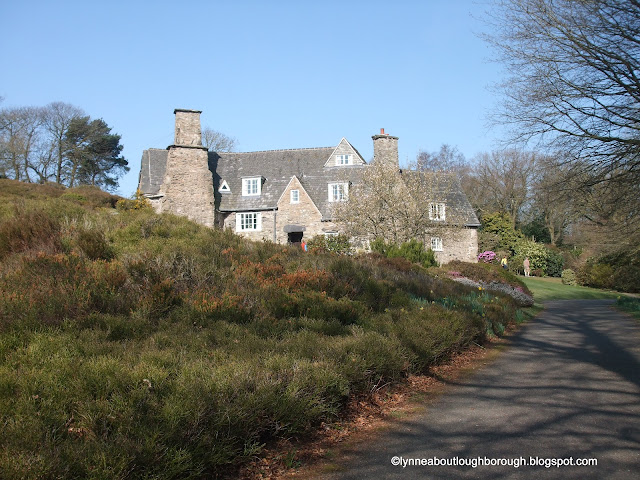




.JPG)


